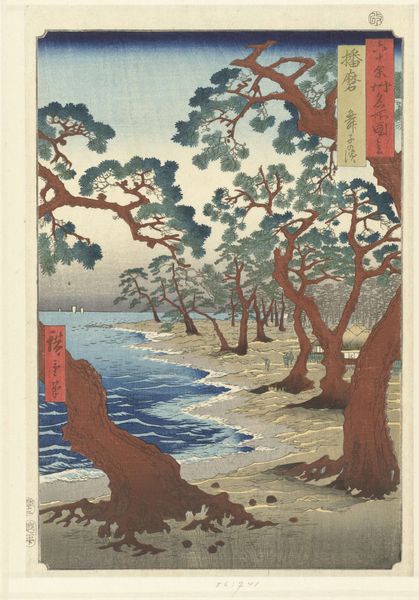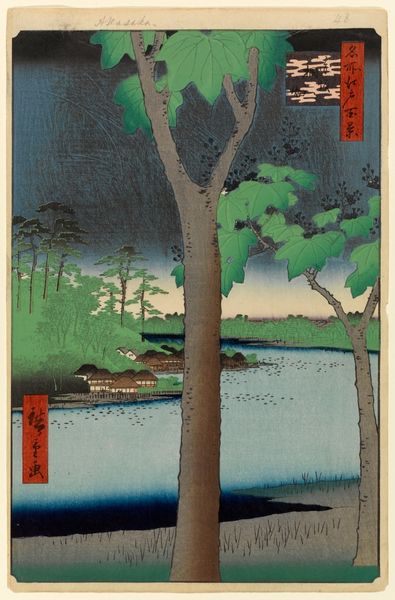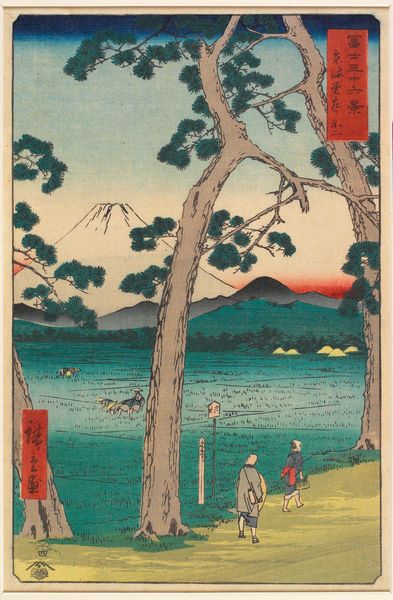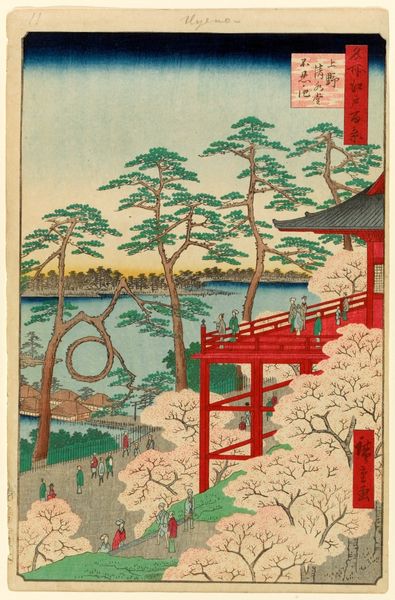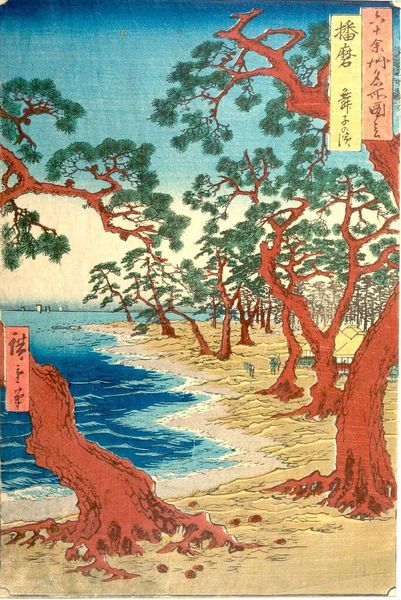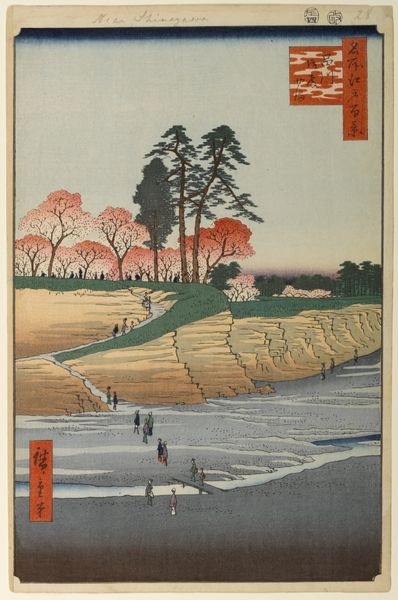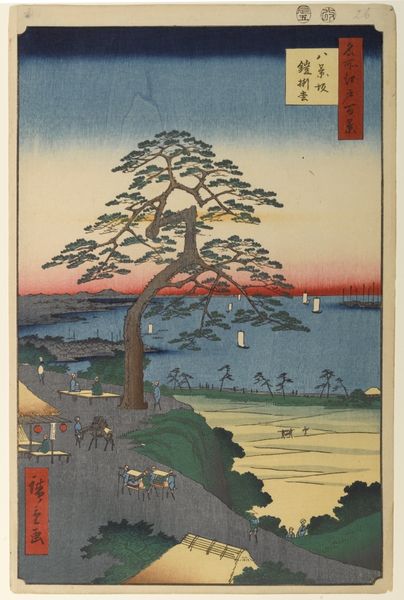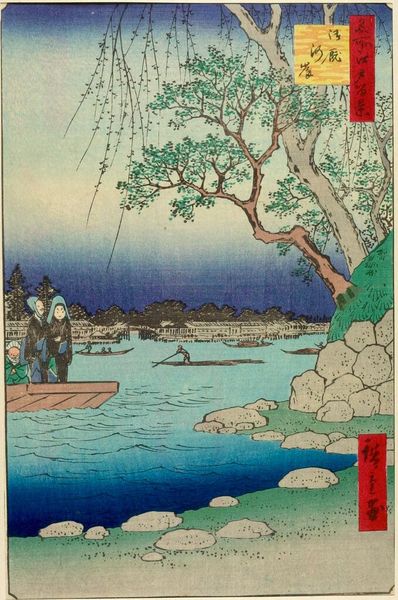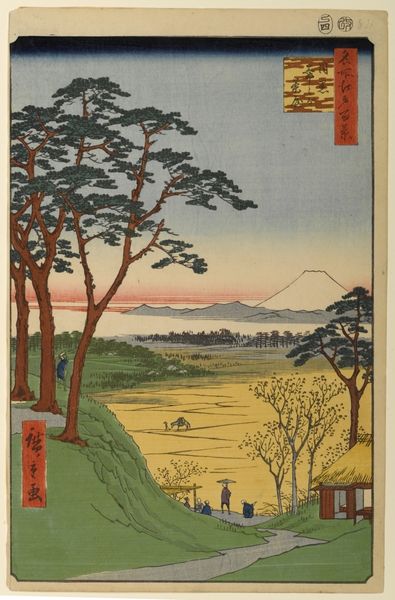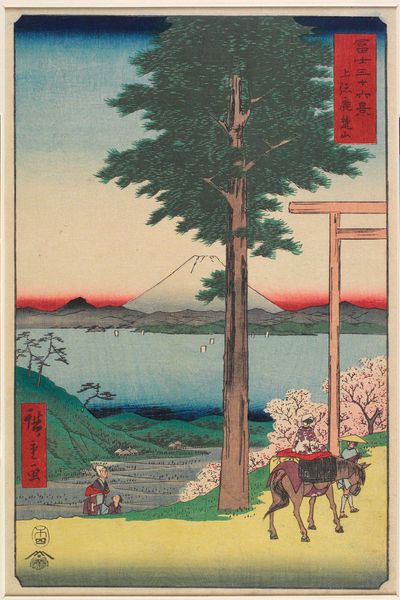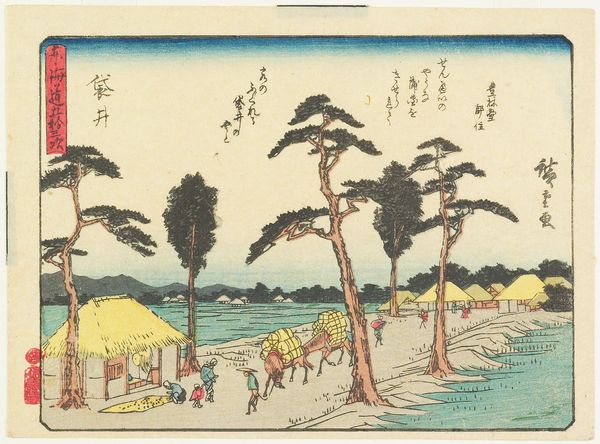
print, woodblock-print, woodcut
#
water colours
# print
#
asian-art
#
landscape
#
ukiyo-e
#
woodblock-print
#
woodcut
#
line
#
watercolor
Dimensions: 13 1/2 × 9 in. (34.3 × 22.9 cm) (image, vertical ōban)
Copyright: Public Domain
Curator: This is "Harima-Maiko Beach" by Utagawa Hiroshige, likely created around 1853. It's a woodblock print, a medium so crucial to understanding art production in 19th century Japan. The lines, the ink, the paper – all point to a system of artisanal labor and distribution. Editor: My first thought is of tranquility. The way the pines frame the scene and lean toward the water evokes a sense of serene observation. There's a contemplative atmosphere, isn't there? Curator: Absolutely. Consider the woodblock printing process. Each color, each line, required a separate block meticulously carved by skilled artisans. The landscape itself is a product of collective labor and highly specific, often localized, material availability and skill sets. The paper, too, has its own story of production, pulping, and distribution networks. Editor: And what do those windswept pines symbolize, do you think? In Japanese art, pines often represent longevity, steadfastness. The way they're depicted here, almost bowing towards the sea, maybe suggests humility, resilience in the face of nature's power. Curator: The interplay between nature and human labor is also captured by the built environment—a lone building almost overwhelmed by the size of the trees, but standing regardless. Editor: True. The composition subtly echoes this. Note how the artist balances the organic shapes of the trees with the geometric shapes of the building and distant coastline. And the figures! So small, yet undeniably present. Perhaps symbolic of humanity's place within this larger landscape. Curator: Look, too, at how widely Hiroshige's prints were circulated, catering to both domestic and, increasingly, international markets. Consider their impact on Western art too – this particular artwork showcases Japonisme at its core! It influenced so many impressionist painters like Van Gogh to produce something very innovative. It changed the nature of art production and global artistic exchange! Editor: It did change how Westerners thought about image-making, perspective and pictorial space. This image encapsulates a pivotal moment in that exchange, reflecting cultural values around nature, travel and representation, I see this location almost a dream. Curator: Absolutely, an industry centered around the material production and exchange of printed images forever reshaped artistic practice. Editor: For me, it deepens our understanding of the symbolism embedded within the natural world. It is more than an image, but also a reminder.
Comments
No comments
Be the first to comment and join the conversation on the ultimate creative platform.
